- Home
- Paul Christopher
Michelangelo's Notebook Page 8
Michelangelo's Notebook Read online
Page 8
What she saw through the slats of the gate as the elevator rose was nothing short of amazing. Each floor looked like a library envisioned by Ray Bradbury as channeled by the Collyer brothers: metal grate floors with endless rows of tall gray bookcases and filing cabinets stuffed to overflowing, turns and corners indicating that there were secret depths to the maze you couldn’t see from the elevator, all of this lit by dim bulbs in green pan-shaped fixtures hanging down out of the darkness. Once or twice she thought she saw movement among the seemingly endless stacks, like a giant shadowy rat, but she was pretty sure the image was caused by the state of her nerves and the gloom. The fifth floor was no different from the others. The elevator came to a smooth stop and she pulled on the rope, raising the gate. She stepped out of the elevator and brought the door down behind her. The elevator automatically moved down again, leaving a deep empty shaft behind. Finn took a step or two forward and looked down between her feet. The holes in the grated floor were large enough to let her see all the way down to the bottom floor. Once upon a time the building had been completely gutted of its interior walls and floors and replaced with a gigantic cage of mesh and struts that now made up the inside of the building.
She turned to the left and looked at the bookcase beside her. Konstructive theoritsche und experimentelle Beitrag zu dem Probleme der Flussigkeitsrakete: W. Von Braun—1934. The title had been hand-typed and then glued onto the spine. A university dissertation maybe? She reached out to pull it from the bookcase for a closer look. A voice stopped her.
“Don’t touch the material, please. We don’t want to disturb Enkel. He’s very possessive about the material.”
“Enkel?” she said into the gloom.
“Enkel Shmolkin. My archivist. I’m not sure where he is right now—somewhere in the stacks. Maybe you’ll run into him.”
Finn looked for a camera lens but this time she couldn’t find it. “Where are you?”
“Straight ahead until you reach the end of the row. Then turn left. You’ll come to a door eventually.”
Feeling a little bit like Dorothy in The Wizard of Oz, Finn went forward, her feet ringing dully on the metal floor. The cases left and right seemed evenly divided between library-width bookcases eight or nine feet high and equally high file-drawer stacks. The file drawers each appeared to be fitted with a sturdy-looking steel Yale lock. The whole place was like the Fort Knox of libraries.
She reached the far end of the passage, turned left and kept walking. Eventually she reached a plain white door with no knob or lock. She put up one fist, preparing to knock, and there was a small clicking noise. The door slid open. It was metal, about three inches thick and had a piano hinge running all the way down one side, like the door to a bank vault.
The room beyond looked like something out of Dickens. It was a sitting room fitted out with several comfortable-looking club chairs, a table cluttered with several newspapers and a narrow, coal-burning fireplace. On the mantel of the fireplace there was a coal scuttle with a leather pouch in it, a violin standing on end and an old-fashioned-looking meerschaum pipe. Over the mantel, drilled into the pale striped wallpaper were the initials V.R. Finn smiled. It wasn’t out of Dickens, it was out of Arthur Conan Doyle. The only thing out of place was a coffeemaker, cups and cream and sugar on a side table along with a plate piled high with what appeared to be freshly made Toll House cookies. “Enkel makes them,” he said, noticing her glance. “Oatmeal and peanut butter too. We’ve both got a bit of a sweet tooth.”
The man seated at the table smiled. He looked like a cross between John Malkovich and Willem Dafoe: high forehead, chiseled cheekbones, broad chin and big sexy mouth. His eyes were black, deep-set and intense. He looked to be in his mid-forties with just enough gray in his hair to make him look a little less dangerous than a younger version of the same man would have been.
“Finn Ryan,” he said. “You don’t look anything like your old man except for the hair.”
Finn didn’t know how to answer that so she looked around the room instead. “Sherlock Holmes’s study,” she said finally.
“Very good,” said Valentine.
“Was it a test?”
“Not at all,” he said. “I just like it when people are literate enough to know what they’re seeing. I just did it for fun. Next time I do something with it, I thought I might try Nero Wolfe.”
“You’re not fat.”
“I’d be Archie Goodwin.”
“That might work.”
“So what’s your problem?”
“Murder, funnily enough.”
“Did you do it?” said Valentine, waving her toward one of the club chairs.
“No,” said Finn.
“Then there’s no problem,” said Valentine. “There’s just a situation that has to be resolved.”
“I think it’s a bit more than that,” said Finn.
“Explain.”
So she did.
15
Half an hour later, while munching on cookies and drinking coffee, her legs drawn up under her in one of the big club chairs, she had brought Valentine up to speed.
“So what do you think?” he asked.
“I think Peter got in the way and died because of it. I think Crawley died because I saw the Michelangelo and I think I’m next.”
“Interesting.”
“It’s more than interesting. It’s my life, Mr. Valentine.”
“Michael, please. I didn’t mean that part of it was interesting. I meant the part about someone dying just because they saw a particular work of art. It doesn’t have any logical basis . . . yet.”
“I don’t think it has a logical basis period. It doesn’t make any sense at all.”
“It makes sense to whoever killed your friend and the director of the Parker-Hale.”
“Why do I get the feeling we’re going around in circles?”
“Because we are,” said Valentine. “The circles get smaller and smaller, and finally you come to the little point of truth right in the center.”
“Way too Zen for me,” answered Finn. “My mother gave me your number if I ever got into real trouble, which is what I think I’m in right now. Aren’t you supposed to do something? We’ve been sitting around drinking coffee and eating cookies and we’re not getting anywhere.”
“Depends on your point of view,” said Valentine. “I know a lot of things I didn’t before. I know what you look like, I know where you live, I know that among other things you’re a nude model, a teacher of English as a second language, a recently fired intern at a prestigious art museum and you’ve been involved in two violent deaths. Any one of those facts could be vitally important to the situation at hand.”
“Why does everyone harp on the nude model part?”
“Because it forces people to imagine you with no clothes on. For some people that’s probably very uncomfortable, for other people it’s probably a delight. It’s a lot different than saying you work as a waitress at IHOP, you’ve got to admit.” Valentine sighed. “My dear Finn, it’s my job to look at details, very small details. When I’m doing a valuation of a rare book for someone, the shape of a letter can mean the difference between the work being authentic or a forgery. If I’m advising somebody on a piece of crucial information, that information has to be exactly right. If you look closely at things you see the details, you see the flaws and sometimes you see the absolute perfection. They can be equally important.”
“You mean the Michelangelo?”
“As an example, sure. That may be the problem right there—it might not be a Michelangelo at all. It wouldn’t be the first time someone was killed over a forgery.”
“It was the real thing. I’m sure of it.”
Valentine smiled. “No offense, kiddo, but you hardly qualify as an expert.”
“And you do?”
“You told me you had a digital image of the drawing.”
Finn nodded. She dug around in her pack, which was leaning by the chair, found her camera a
nd handed it over to Valentine. He opened the flap at the camera’s bottom, withdrew the firewire connector and plugged it into the black, flat-screened IBM on his desk. Finn got up and came around to stand behind him as he worked the keyboard. She looked around but she couldn’t actually see the computer itself.
“It’s a server down in the basement,” said Valentine without looking up from what he was doing, as though reading her mind. “It’s cooler down there.”
“What do you have?” Finn asked. “A supercomputer or something?”
“Not quite,” he answered. “But close. I do a lot of work for some people in California. They pay me in computer technology.” He sat back in his chair. “There we go.” On the screen was the Michelangelo drawing, full size. The detail on the screen was flawless.
“Well?” Finn asked.
“I’ve got to admit it looks pretty good. Authentic at first glance, anyway.” He tapped some more keys and the drawing vanished.
“What are you doing?”
“Comparison test. I’ve got some material on file. If we need more, I can get it out of the stacks.”
“Comparing what?”
“The words in the corner there. See if the handwriting’s the same.”
The screen stayed blank for a moment, then resolved itself into a windowpanelike alignment of four sections. Each one appeared to hold a small piece of handwriting. He then hit another key and a fifth pane in the window appeared with the Michelangelo drawing. After another keystroke, the drawing dropped away, leaving only the writing.
“Now we’ll see,” said Valentine. He tapped keys with his long fluid fingers and for a moment Finn found herself thinking that they’d be very sensitive touching her. She wiped the thought out of her mind as quickly as the images on the screen disappeared. Now there were only two sections to the window—one on the left with a scrap of obviously very old handwriting in cursive Italian, the other a blown-up version of the writing on the drawing.
Finn leaned over Valentine’s shoulder, her hair cascading down over his cheek. She read the lines easily:
“What joy hath you glad wreath of flowers that is
Around each hair so deftly twined,
Each blossom pressing forward from behind,
As though to be the first her brows to kiss.”
Valentine picked it up at the beginning of the next line:
“The livelong day her dress hath perfect bliss,
That now reveals her breast, now seems to bind,
And that fair woven net of gold refined
Rests on her cheek and throat in happiness.”
Finn stepped back, blushing, realizing that she’d been standing much too close to Valentine while they read. “It’s one of his sonnets to his mistress, Clarissa Saffi. She was a courtesan, actually.”
“The first one he wrote about her, if I remember correctly,” agreed Valentine. “You’re very good.”
“You’re not bad yourself,” she said, taking another step away, grabbing her hair nervously and holding it against her neck. “Most people don’t even known he wrote poetry.”
“Everyone wrote poetry back then,” said Valentine, smiling and showing off his large square teeth.
He turned back to the screen. “I think poetry took the place of game shows.” He played with the keyboard again. “Now let’s see if we can get them to match up.” Slowly he used the mouse to drag the writing from the drawing across and atop the other one. He fiddled with the mouse, clicking it from time to time, then entered a series of instructions. The screen cleared again, split down the middle with five individual letters on each side:
Valentine then used the mouse to drag one set of letters so that they covered the first:
A
E
I
O
U
“Looks like a match to me,” said Finn.
“Me too,” said Valentine. “I’d say your drawing was definitely a Michelangelo.” He stared at the screen. “Certainly the handwriting is the same.” He paused. “Did Delaney tell you how Crawley was killed?”
“He said he was strangled but somebody stuck some kind of ritual dagger in his mouth.” Finn made a face. “I didn’t like Mr. Crawley, but it still sounds gross.”
“This ritual dagger, what kind was it—do you remember?”
“He called it a koummya or something.”
“Spanish. Andalusian. Sometimes from southern Morocco.”
“You know everything?”
“A little bit about a lot,” he said. “That’s what makes me dangerous.”
“You’re dangerous?”
“I can be.”
Finn went back to her chair and sat down again. “So now what do we do?”
“I’m not sure, exactly,” he murmured, still staring at the screen. “This is interesting but . . .”
“It’s not the kind of evidence we can take to the police.”
“It’s all electronic, for one thing. There’s no actual drawing. Did Delaney mention anything about finding it in Crawley’s office?”
“No. He kept on asking me where I saw it last, I kept on telling him Crawley had it in his hand.” She frowned. “I think he figures I stole it.”
“There must be surveillance cameras.”
“There are. I don’t know if I’m on them. If I am then that’ll prove I didn’t take it.”
“But it would also prove you photographed them,” said Valentine, “which might be enough reason to come after you at your apartment.”
“I thought of that, but it still doesn’t make any sense. It’s as though the very existence of the drawing, phony or not, is evidence of something . . . something worth killing for.”
“It’s like I said about going around in circles.” Valentine smiled. “Eventually you get to the little dot of truth at the middle of the vortex. Which I think perhaps you just did.”
“What truth?”
“The existence of the drawing is worth killing for.”
“What kind of truth is that?”
“A dangerous one.”
16
The man in the priest’s collar got off the Delta flight from Rome at three fifteen, ran his small black fiber suitcase through the machines and then showed his Vatican passport to a hard-eyed uniformed INS man. The passport identified him as Father Ricardo Gentile and his occupation as priest, which seemed fairly self-evident. In fact none of the information on the passport was true, and the passport itself, although genuine, did not exist on any records at the Vatican passport office in Rome. The INS man handed him back the passport after a brief glance then gave him an “I am the first line of defense in the war against terrorism” nod and allowed him into the United States.
Father Gentile followed the crowds out into the afternoon sunlight, picked up a cab and told the Nigerian driver to take him to the JFK Holiday Inn. He avoided speaking to the driver in his native Anaang although he spoke it fluently; the last thing he wanted to do was make an impression on anyone at this point. As usual the dog collar was bad enough.
The drive took only a few minutes and by three forty-five Father Gentile was checked into the office building slab of the hotel at the junction of the Van Wyck Expressway and the Belt Parkway. The room was narrow, simply furnished and small. The color scheme was predominantly a grape-tinted purple. His window looked out over some sort of Japanese garden. He couldn’t have cared less. He swished the blinds closed and switched on the desk light. There was no overhead; it was something he’d been noticing recently on his travels, the lack of overhead lighting. He went to the closet, found the hard-shell suitcase that had been left for him earlier that afternoon and unlocked it with the key that had been Fed-Exed to him the day before in Rome. He removed the contents, which included two suits, several Arrow shirts in different colors, still in their wrapping, a pair of black James Taylor and Son elevator shoes that added two inches to his height and a Glock 21 10mm automatic pistol with a fifteen-round law enforcement magazine
and a Patrick Johnakin muzzle-up spring-loaded shoulder rig to go with it. He stripped off his priest’s clothes, redressed—complete with the Glock and holster—then neatly placed everything into the hard-shell suitcase and locked it again.
He reached inside the pocket of the suit jacket and withdrew two wallets, one large and European, the other an ordinary American-style bill-fold. The large wallet identified him as Peter Ruffino, an Italian agent of the Art Recovery Tactical Squad (ARTS), which was itself a division of Allied International Intelligence, or Alintel, a worldwide concern representing everybody from Lloyds to the British Museum, including several royal families, dozens of major corporations and even a few governments.

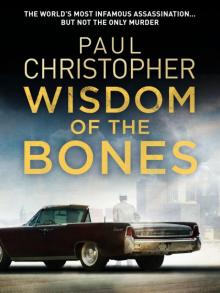 Wisdom of the Bones
Wisdom of the Bones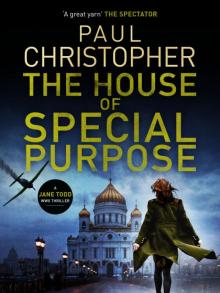 The House of Special Purpose
The House of Special Purpose The Second Assassin
The Second Assassin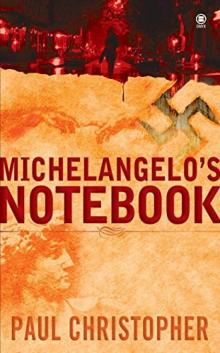 Michelangelo's Notebook
Michelangelo's Notebook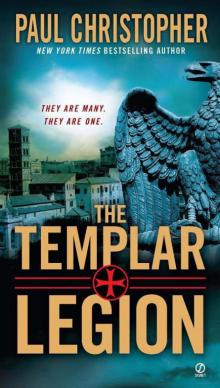 Templar Legion
Templar Legion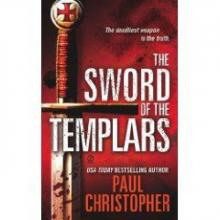 The Sword of the Templars t-1
The Sword of the Templars t-1 Red Templar
Red Templar The Aztec Heresy
The Aztec Heresy The Templar Legion
The Templar Legion Rembrandt's Ghost
Rembrandt's Ghost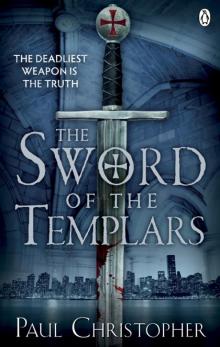 Sword of the Templars
Sword of the Templars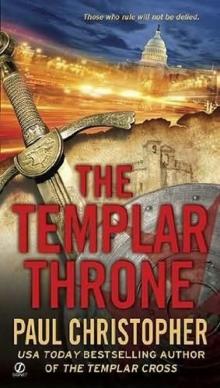 The Templar throne t-3
The Templar throne t-3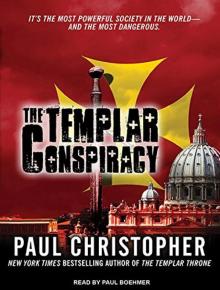 The Templar Conspiracy
The Templar Conspiracy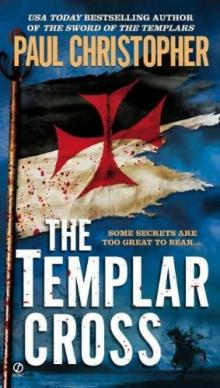 The Templar Cross t-2
The Templar Cross t-2 The Templar Legion t-5
The Templar Legion t-5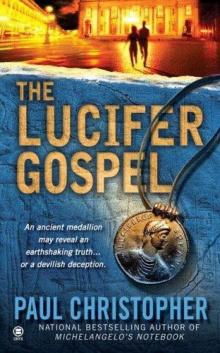 The Lucifer Gospel
The Lucifer Gospel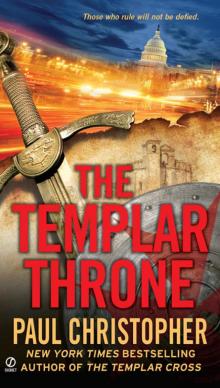 Templar Throne
Templar Throne Michelangelo_s Notebook fr-1
Michelangelo_s Notebook fr-1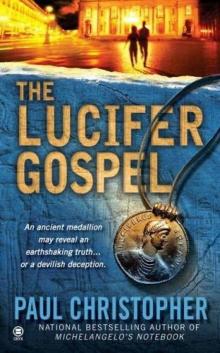 The Lucifer Gospel fr-2
The Lucifer Gospel fr-2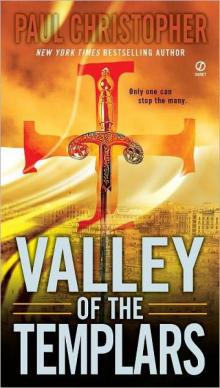 Valley of the Templars ts-7
Valley of the Templars ts-7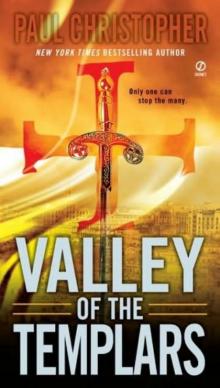 Valley of the Templars
Valley of the Templars Templar Cross
Templar Cross The Templar Throne
The Templar Throne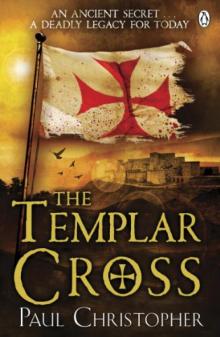 The Templar Cross
The Templar Cross Lost City of the Templars
Lost City of the Templars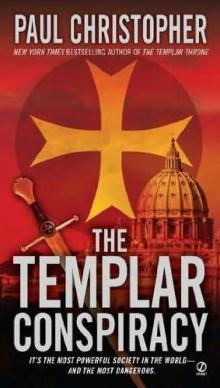 The Templar conspiracy t-4
The Templar conspiracy t-4 Templar Conspiracy
Templar Conspiracy